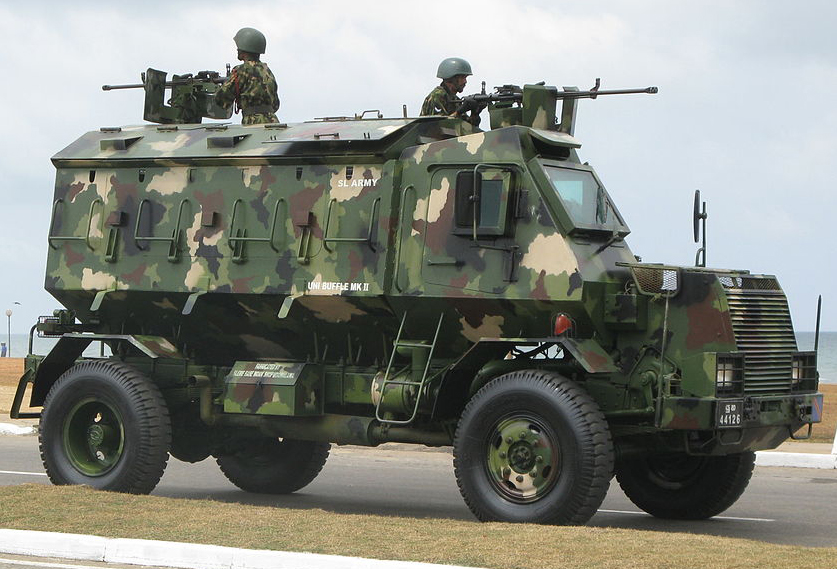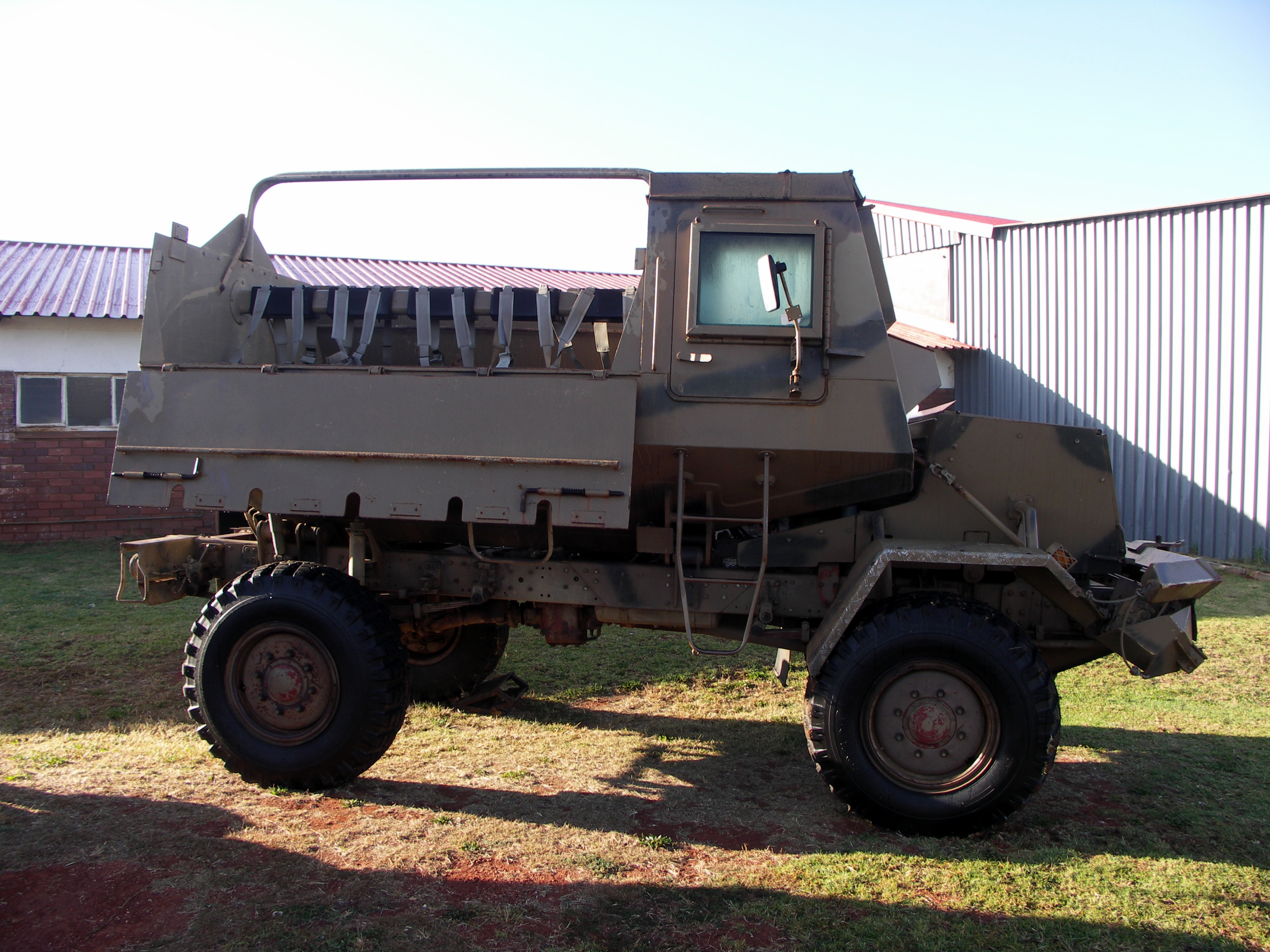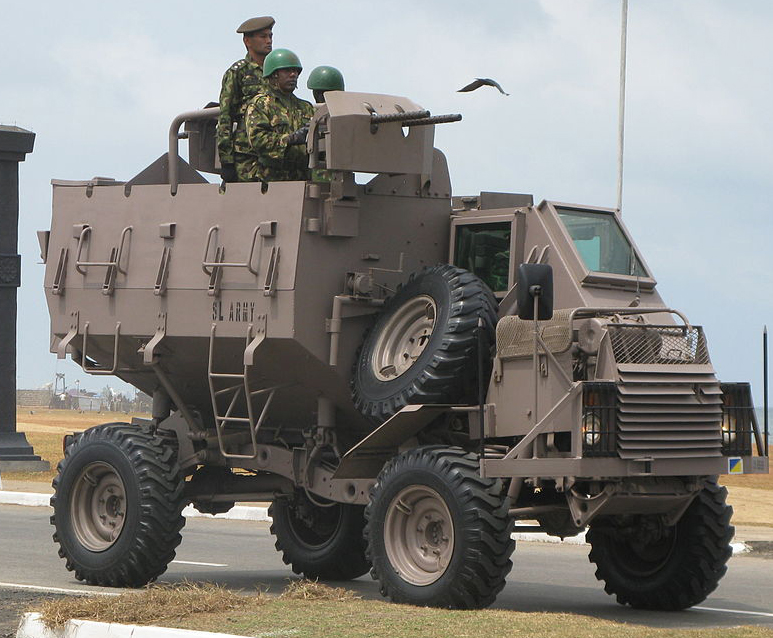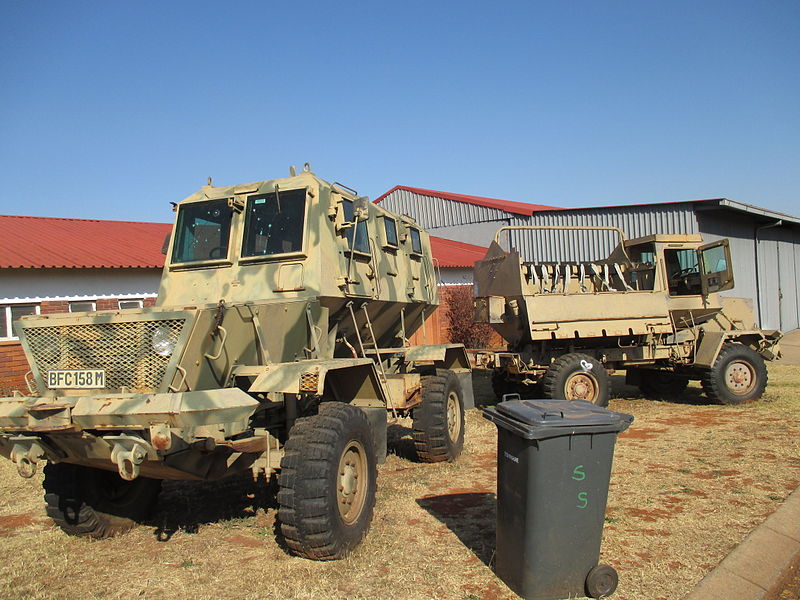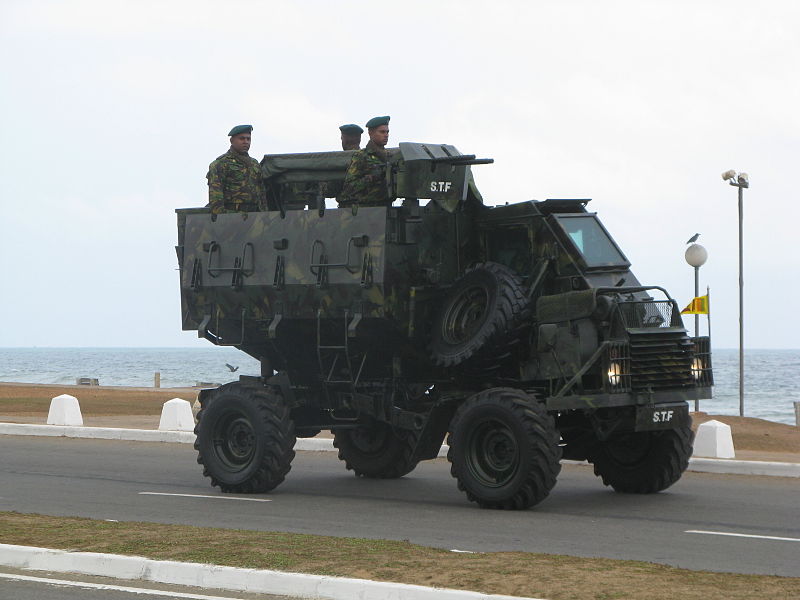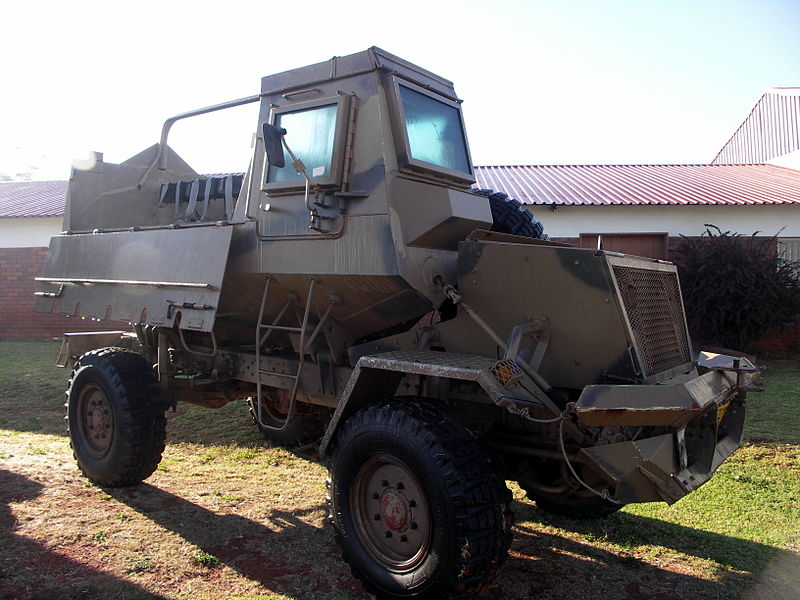The first Mine Protected Vehicle
Long before the plague of IEDs in Afghanistan or Iraq which saw the generalization of MRAPs (Mine-Resistant Ambush Vehicle), South Africa invented the concept of the MPV (Mine-protected Vehicle) with the Buffel (Afrikaans for Buffalo). The first landmine-protected armored personnel carrier entered service in 1978 to answer the precise problem of heavily mined border areas next to Angola by Swapo terrorists, and remains active until 1995 when it was definitively replaced by the Mamba at least in South African service. In between it was modernized and declined into several variants, some still in service in Africa and Asia.
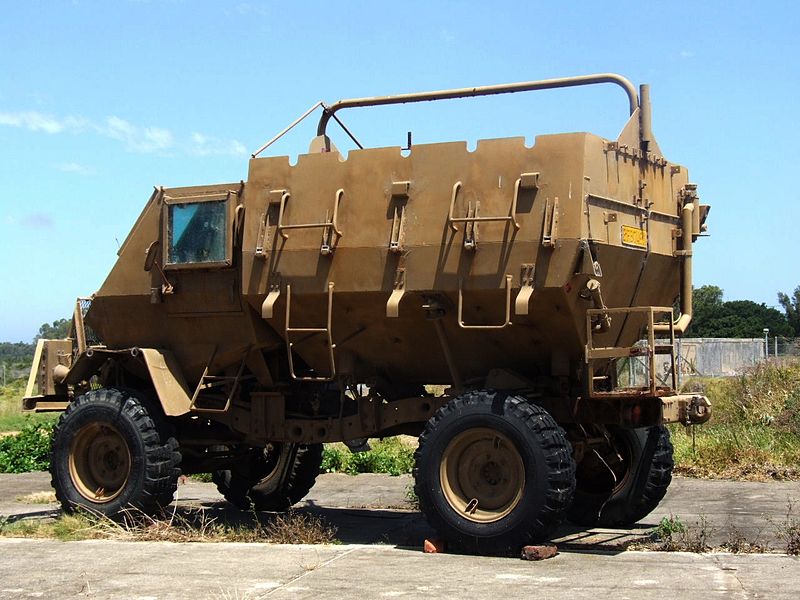
The Buffel, an ugly beast designed to survive mine blasts.
From the Bosvark to the Buffel
This vehicle did not started from scratch but proceeded from the Bosvark (South African Bushpig), previous mainstream APC of the SANDF. The latter was already produced at Bosvark by 61 Base Workshops in Pretoria from Mercedes-Benz Unimog 416-162 chassis back in 1974. 54 has been converted in all, but they offered little protection to the driver. So it was decided to improve the design in a radical manner. Dr Vernon Joynt (Council for Scientific and Industrial Research) designed the first wedge shaped mine protected vehicle, the Hyena. Thereafter it was declined into a family of vehicles, including the Hippo, Casspir and Swerwer APCs. The Buffel was produced in an extent of perhaps 2,400 vehicles until the 1990s before being superseded by more modern models.
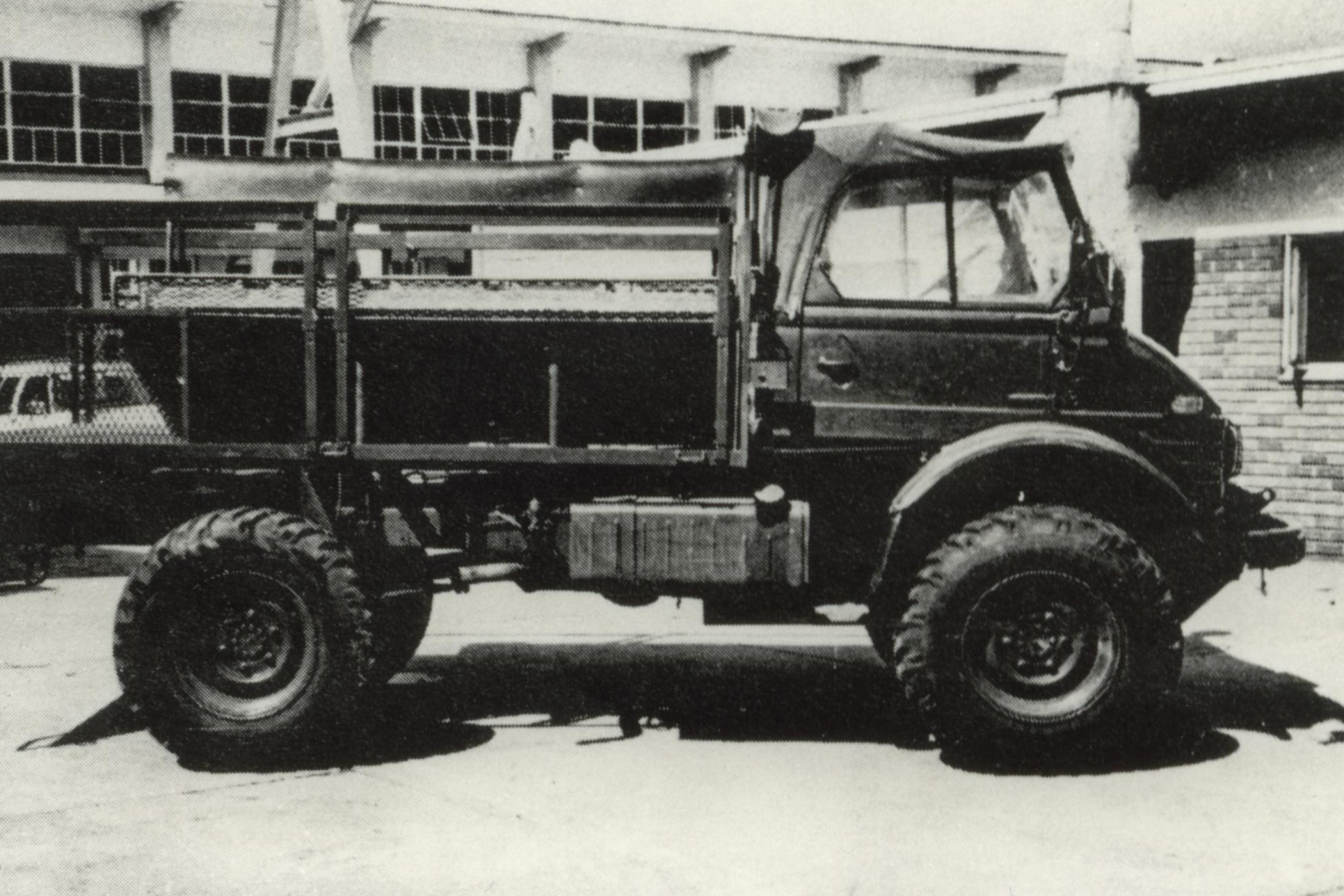
The Bosvark, an APC design over a 4×4 Unimog chassis, which was vulnerable to mines.
Design
The Buffel could hardly be called a 100% African design, as it was based on the versatile and proven 4×4 Mercedes-Benz Unimog 416-162 chassis, including the main engine, Mercedes-Benz OM352 6-cylinder. Later variants were given an Atlantis Diesel Engine 352 6-cylinder diesel. However the entire modules above were of South African design, with a unique and typical arrangement: The front part was separated between the engine (left) almost in open air, and driver’s cab (right) which was the sole fully enclosed space on board, as behind was mounted a bucket-like open compartment for the troops, with five individual V-shape armoured cones seats, each side on the central axis, back-to-back.
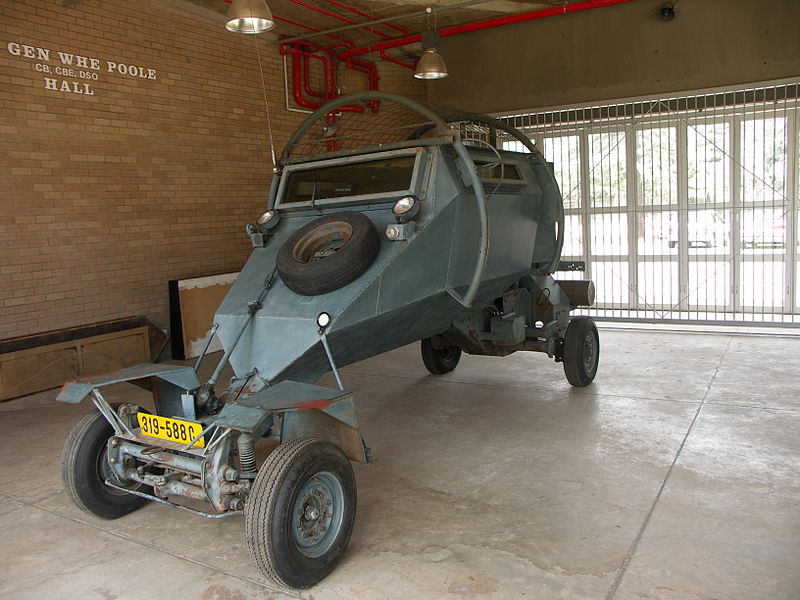
The Leopard security vehicle. A strange yet functionnal MPV reminscent of the Hyena, the first design with the famous V-shaped underbelly.
The troops can then disembark from the folding side panels. When locked up, this side panels provided some protection up to the torso and were given openings for small arms, in order to procure fire on the move. Although a high target with no overhead protection but a bar (a tarpaulin could be attached to it in rainy conditions), the Buffel can resist blasts from the most common mines. In addition to the V-shaped belly there was a 200L diesel tank and a 100L water tank mounted one above the other under the feets of the soldiers, a necessity in operation in this area. The tyres were also filled with water to help dissipate the energy from hitting a mine. Armament wa located on a pintle mount on the front-right hand side of the troop compartment, usually a standard Browning M1919A4 or a GMPG machine gun, but in some arrangement twin shielded Browning A4 (four in all) were located on opposite sides pintles of the compartment.
The range was comfortable, about 1000 km (620 miles) due to diesel and relatively low consumption, for a top speed of 96 km/h (60 mph) on flat and 30 km/h (19 mph) off-road. Although having a somewhat high center of gravity when well handled the vehicle was stable and few top-over accidents has been registered.
The Buffel in service
The Buffel was deployed by SANDF forces as soon it was available as the main patrol APC on the border and largely proved the soundness of the design. However it was gradually improved over the years: The Buffel Mark 1 had an Improved engine and a bushguard/bumper. The Buffel Mk 1B had its original disc brakes replaced drum brakes. Eventually the Buffel Mk IIA was a heavily modified version with the whole rear compartment being fully enclosed, with large windows, and rear exit door. it was also called the Moffel. In addition to SANDF (now all these vehicles are retired), it was adopted by Sri Lanka (licence production), Namibia, Uganda (20) and Zambia (Rhino). In addition to SANDF, Rhodesia also operated Buffels for some time. Buffels saw action in the Rhodesian Bush War, Angolan Civil War, Namibian War of Independence, Second Congo War and Eelam War (between Sri Lanka and the LTTE).
Variants
Log Buffel: A specialized logistic/cargo variant, with the seat assembly removed from the troop compartment to a large storage bay.
Buffel Mk IIB: Cargo variant of the fully-enclosed version MkIIA (57 ordered in the mid-1980s), playload capacity 2.6 tons.
Bulldog: Based on the SAMIL 20 truck, with the driver’s cabin on the right. It was used by the SAAF for patrolling airfields and declined into the AA specialized version Ystervark.
Rhino A derivative of the Bulldog: The driver cabin was moved rearwards and integrated into the main enclosed crew’s compartment (20 produced, used by SAAF).
Unicorn: The Sri lanka Army denomination of the Buffel (1985)
Unibuffel: Sri Lanka modified version of the Mk1, but with a Tata engine.
Links
The Buffel on wikipedia
A full specification sheet
Others: Jane’s Land Warfare Platforms.
Buffel specifications |
|
| Dimensions | 5.1 x2.05 x2.95 m (16.7 x6.7x 9.6 ft) |
| Total weight, battle ready | 6.14 tons |
| Crew | 1+10 (driver, 10 troops) |
| Propulsion | Mercedes-Benz OM352 6-cylinder, 300?hp |
| Suspension | 4×4 independent coil springs |
| Speed (road) | 96 km/h (60 mph) |
| Range | 1000 km (620 mi) |
| Armament | Browning M1919A4 or GMPG |
| Armor | Unknown – small arms fire protection |
| Total production | 2,400 1978-1990 |
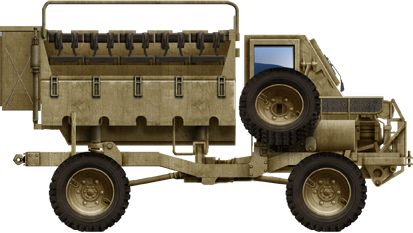
SANDF Buffel, left view, open bay. The “buffalo” certainly is in the top three world’s ugliest AFV ever designed, but its only raison d’être lays with pure functionality. Dependable and Replaceable, it was for 20 years SANDF’s reference mine-proof APC.
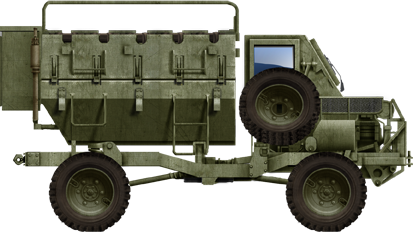
SANDF Buffel, left view, closed bay, pale olive livery.
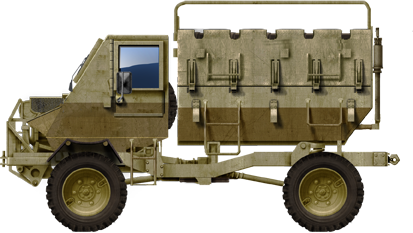
SANDF Buffel with closed bay. In the 1980s MkII were maintained in service with a rear compartment fully enclosed.
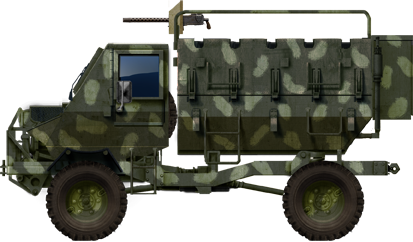
Sri Lanka Unicorn (local Buffel). The Unibuffel is a locally modify, fully enclosed version.
Video: The Buffel
Gallery

Cold War Tanks


































Cold war tanks posters

Cold War Main Battle Tanks

Cold War Soviet Army
Museums, Movies, Books & Games
The Tanks and Armor in pop culture
Tanks and armored vehicles in general are only really grasped when seen first person: The mass, the scale, it's all there. Explore also the way tanks were covered in the movie industry, in books and in video games.Movies:
Best tanks movie on warhistoryonline.com
On imdb.com
On bestsimilar.com/
miltours.com
liveabout.com/
watchmojo.com
Video Games:
pcgamesn.com
historyhit.com
levvvel.com
vg247.com/best-tank-games
mmobomb.com/
alienwarearena.com



